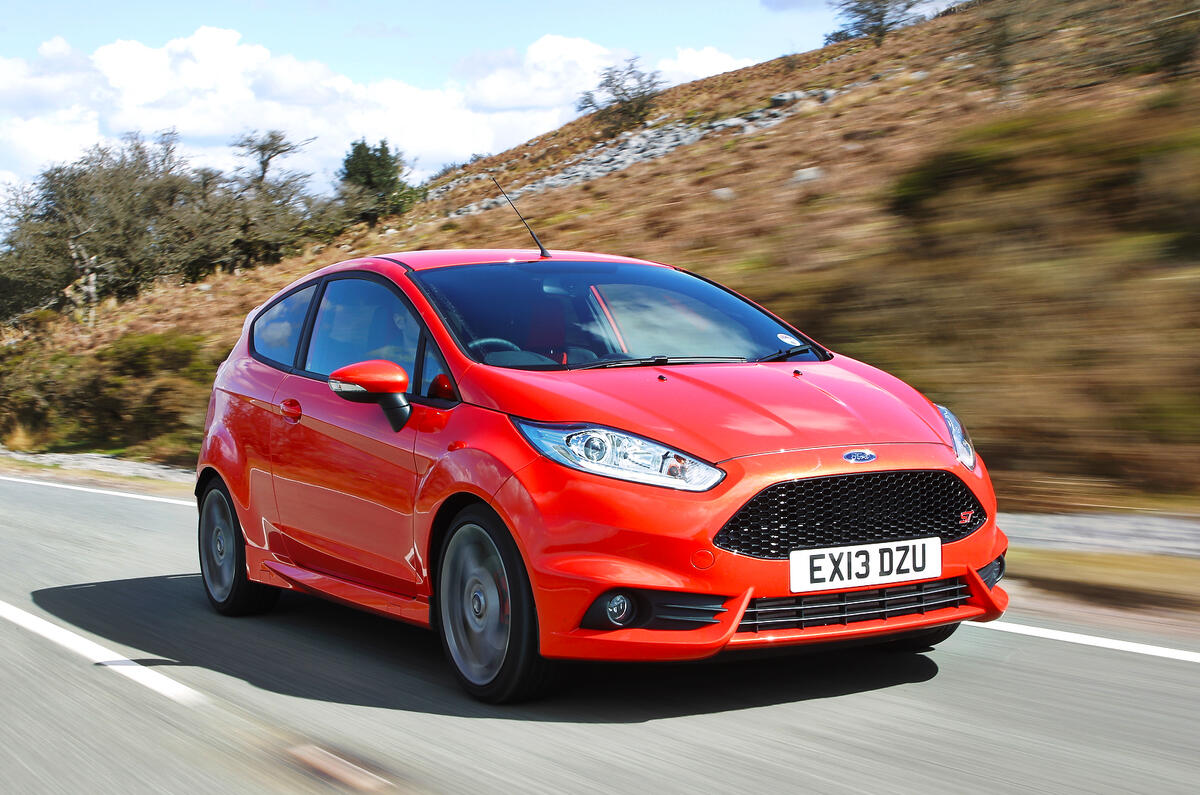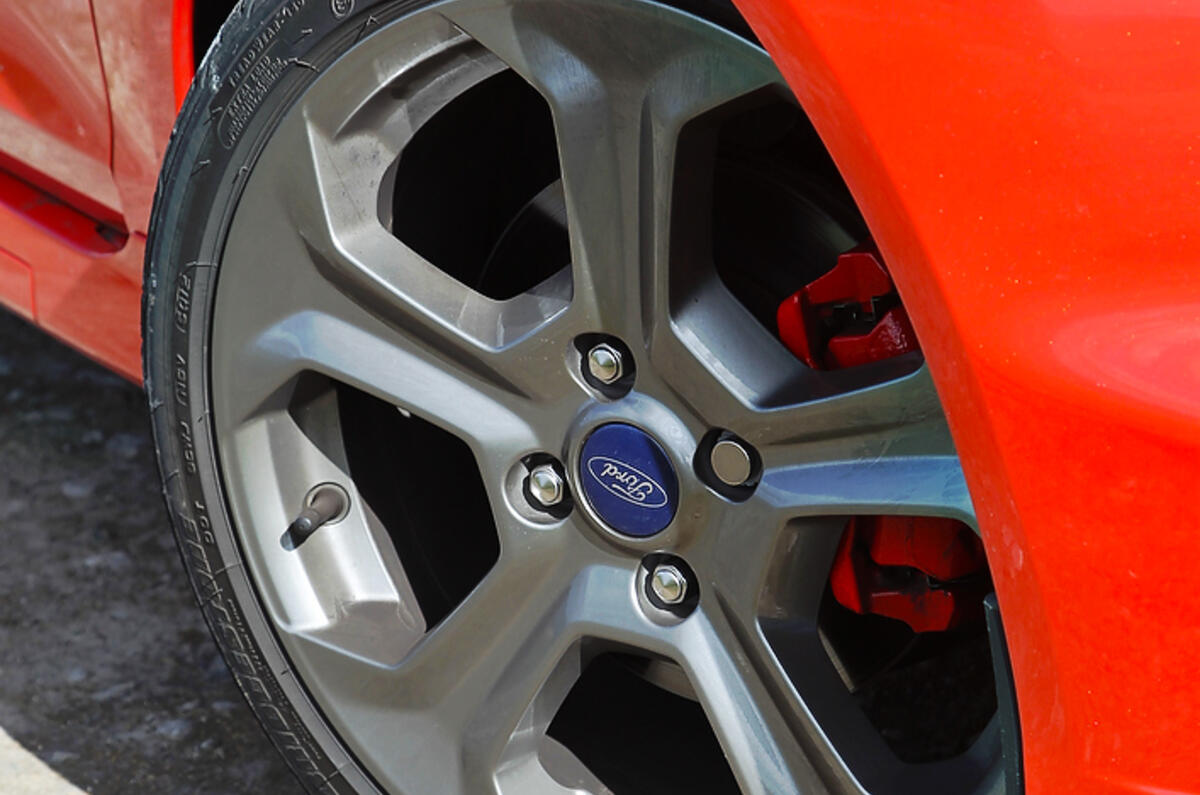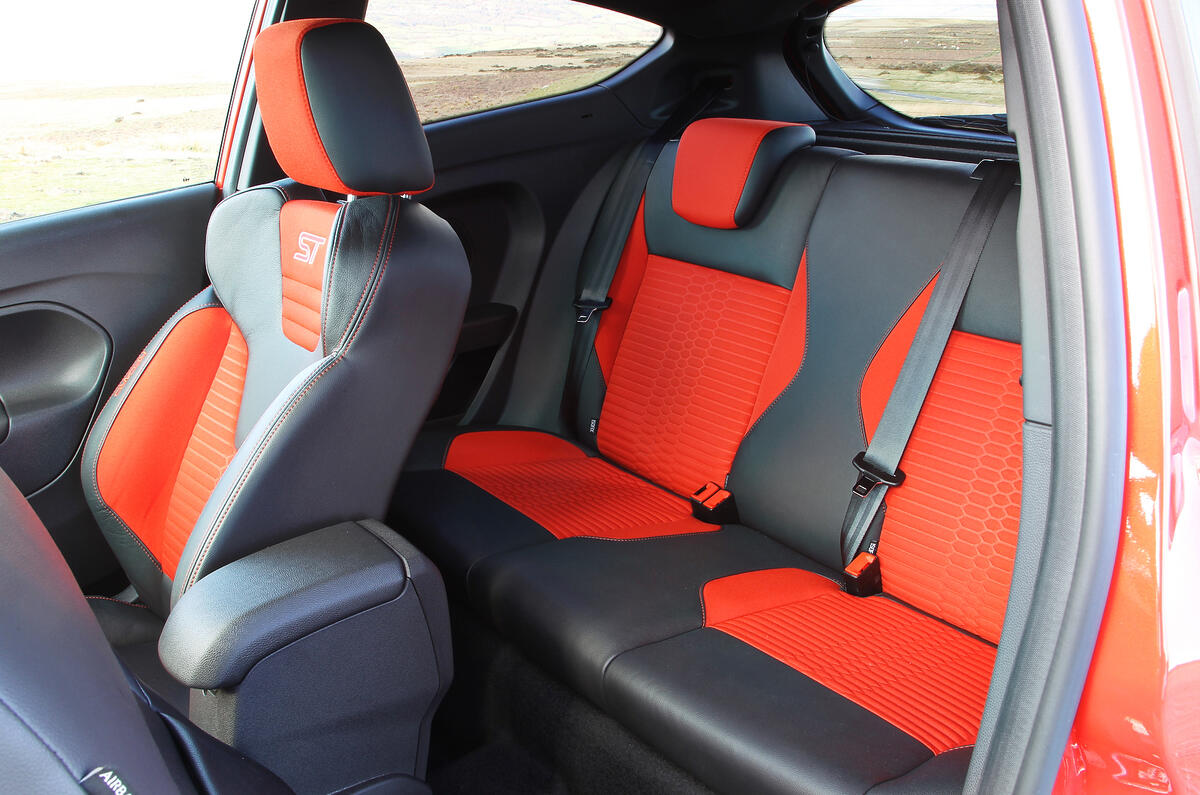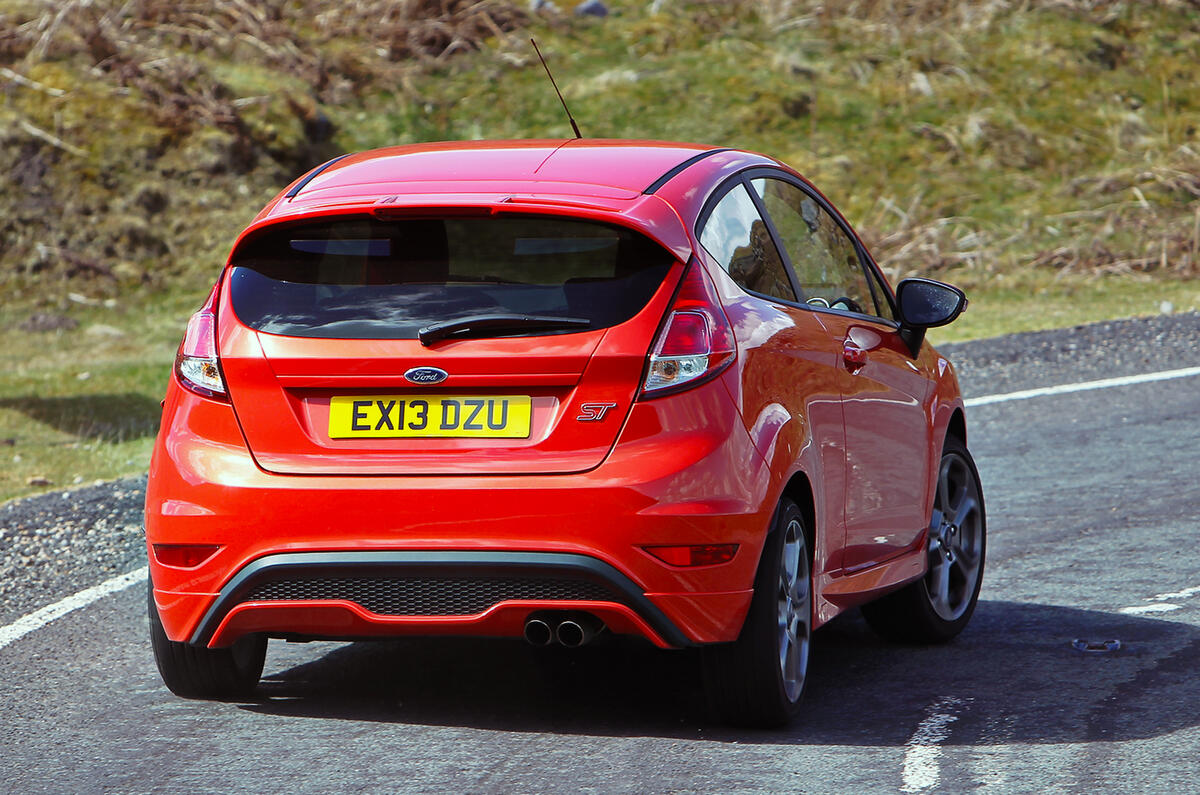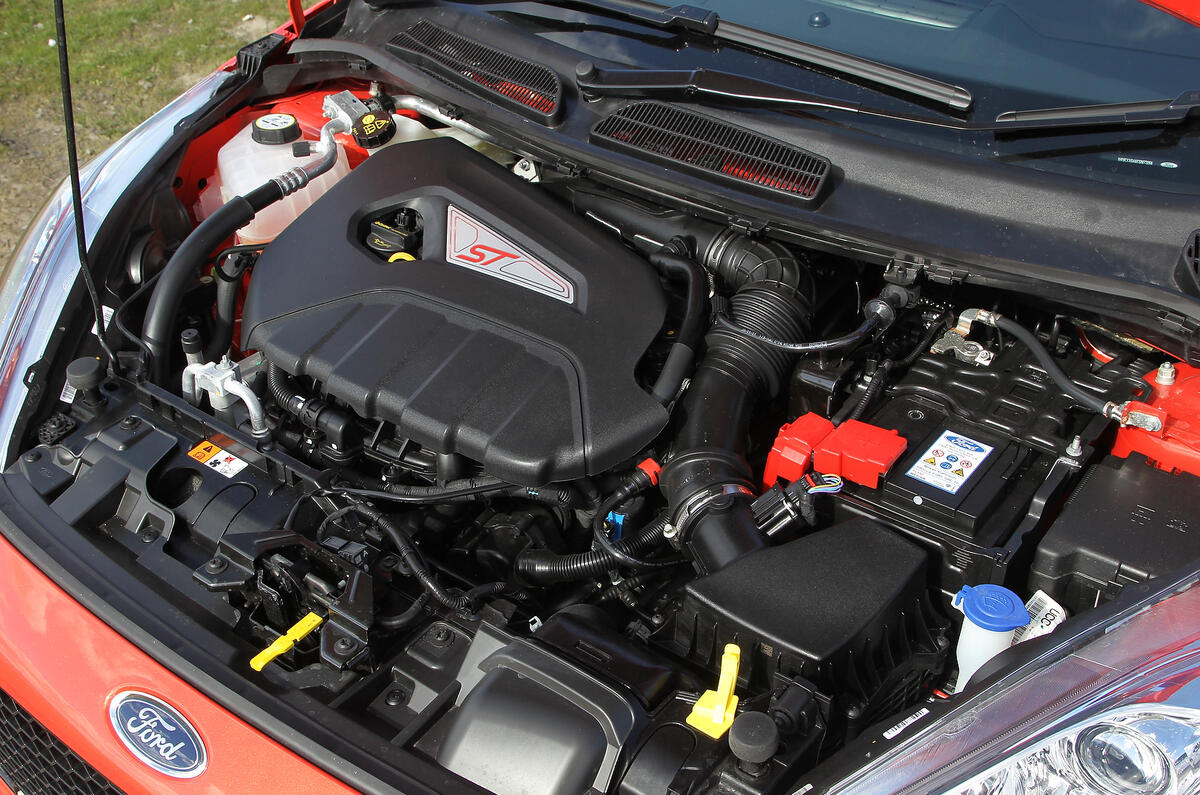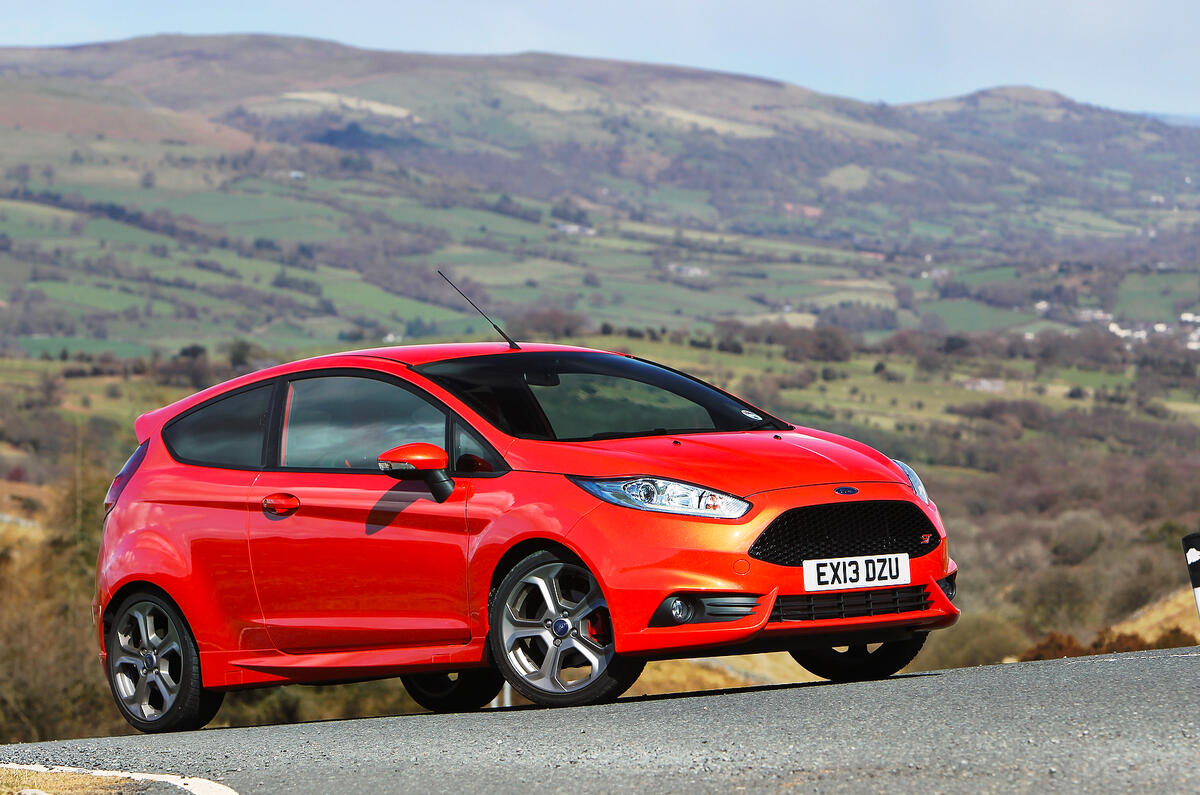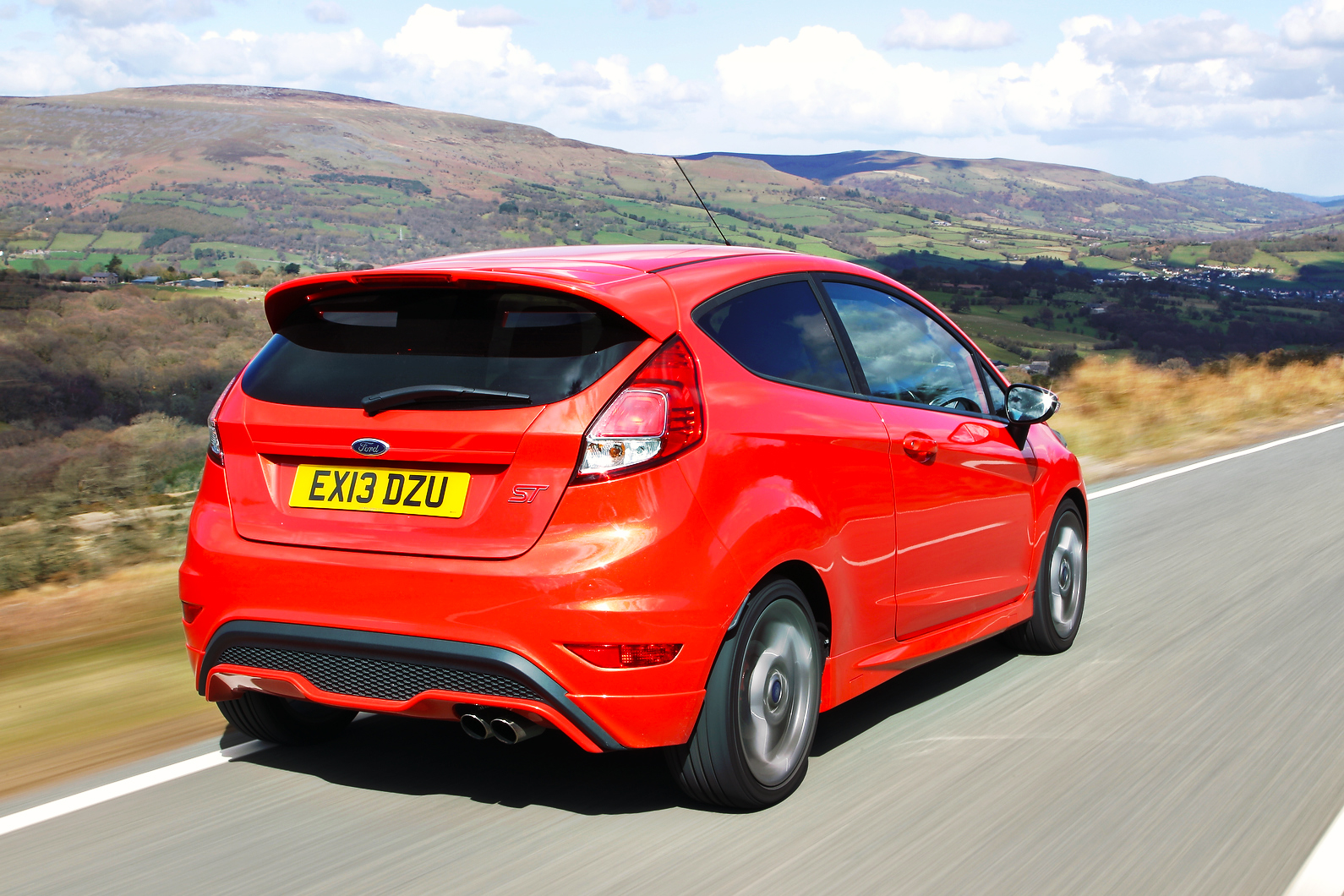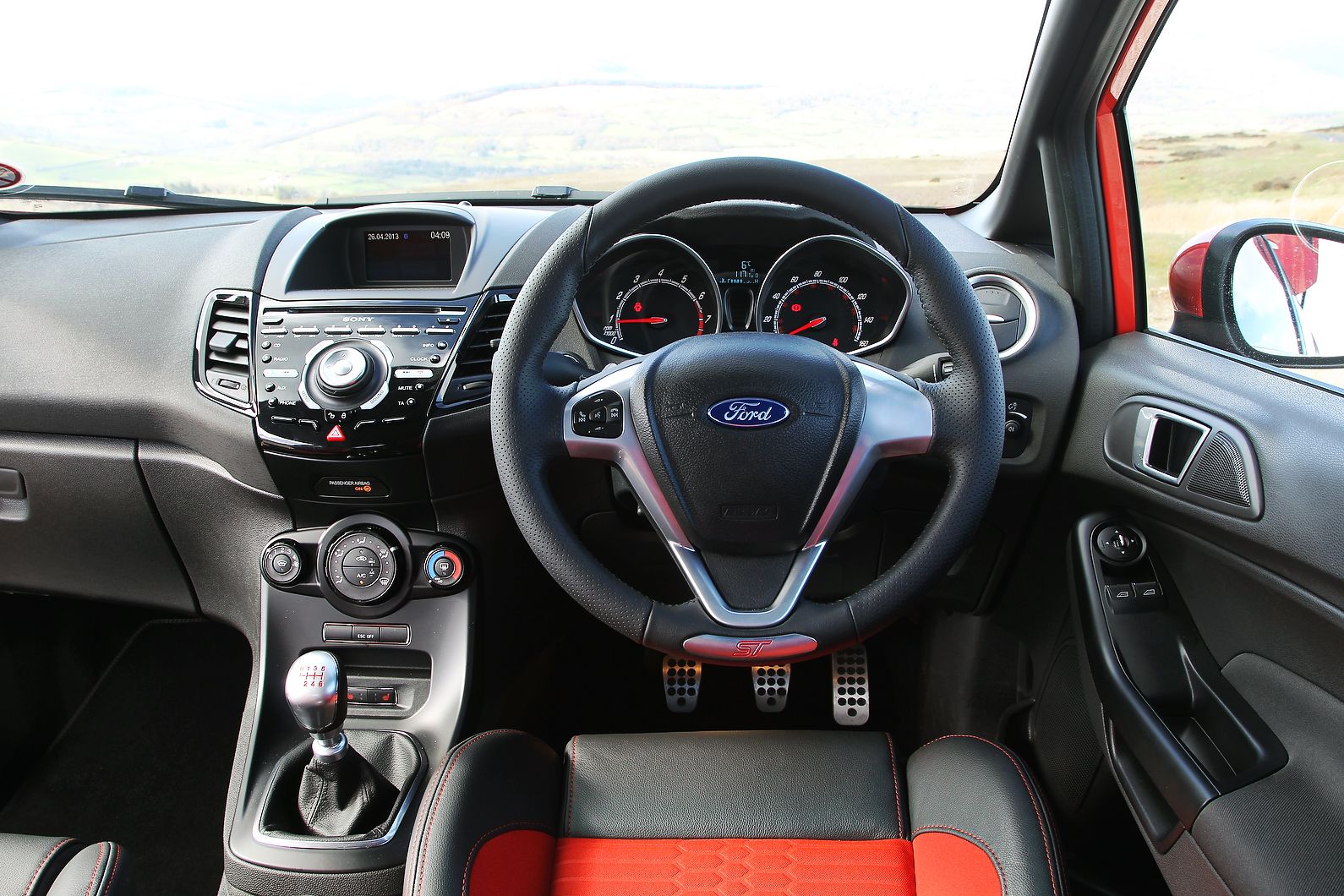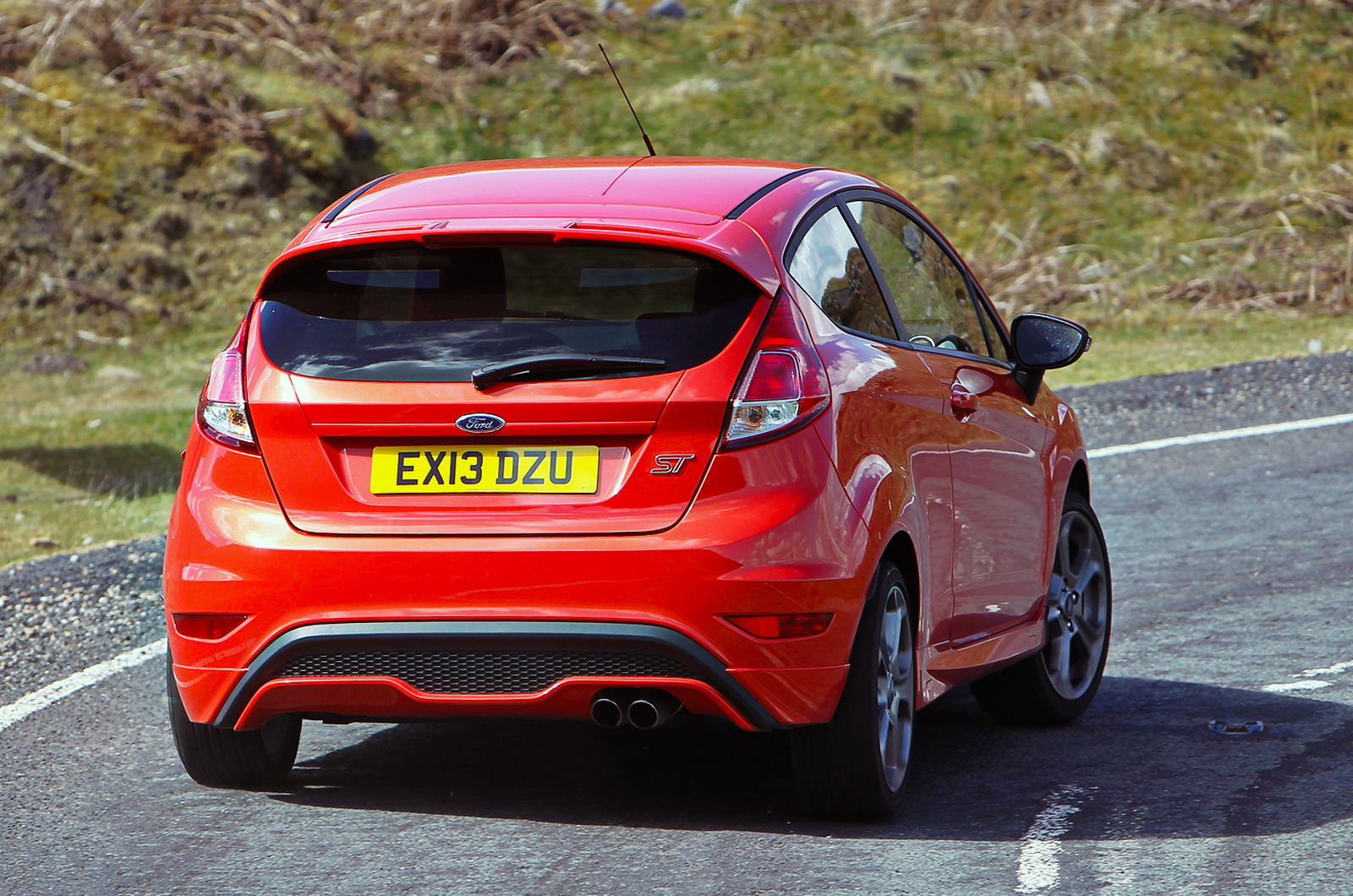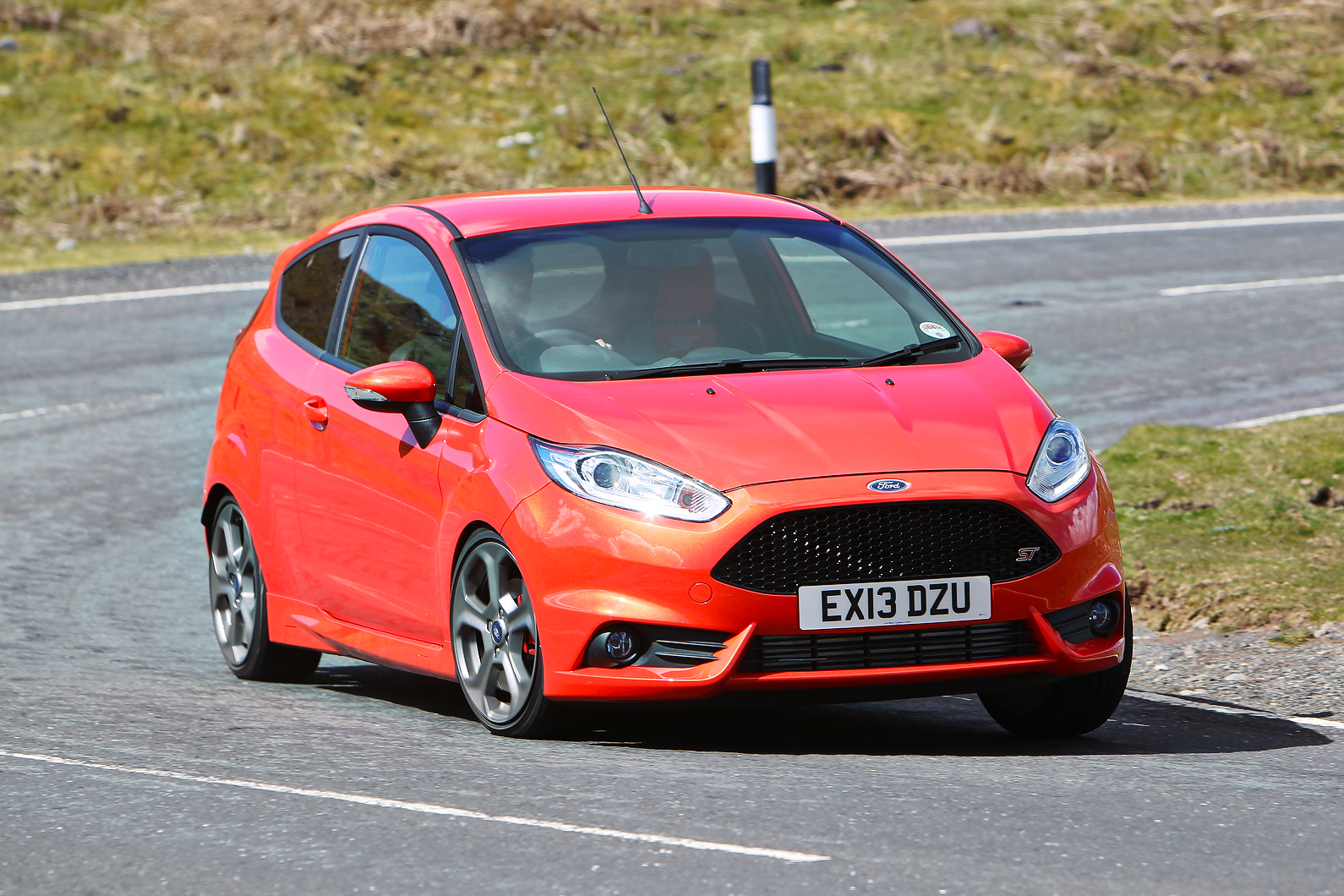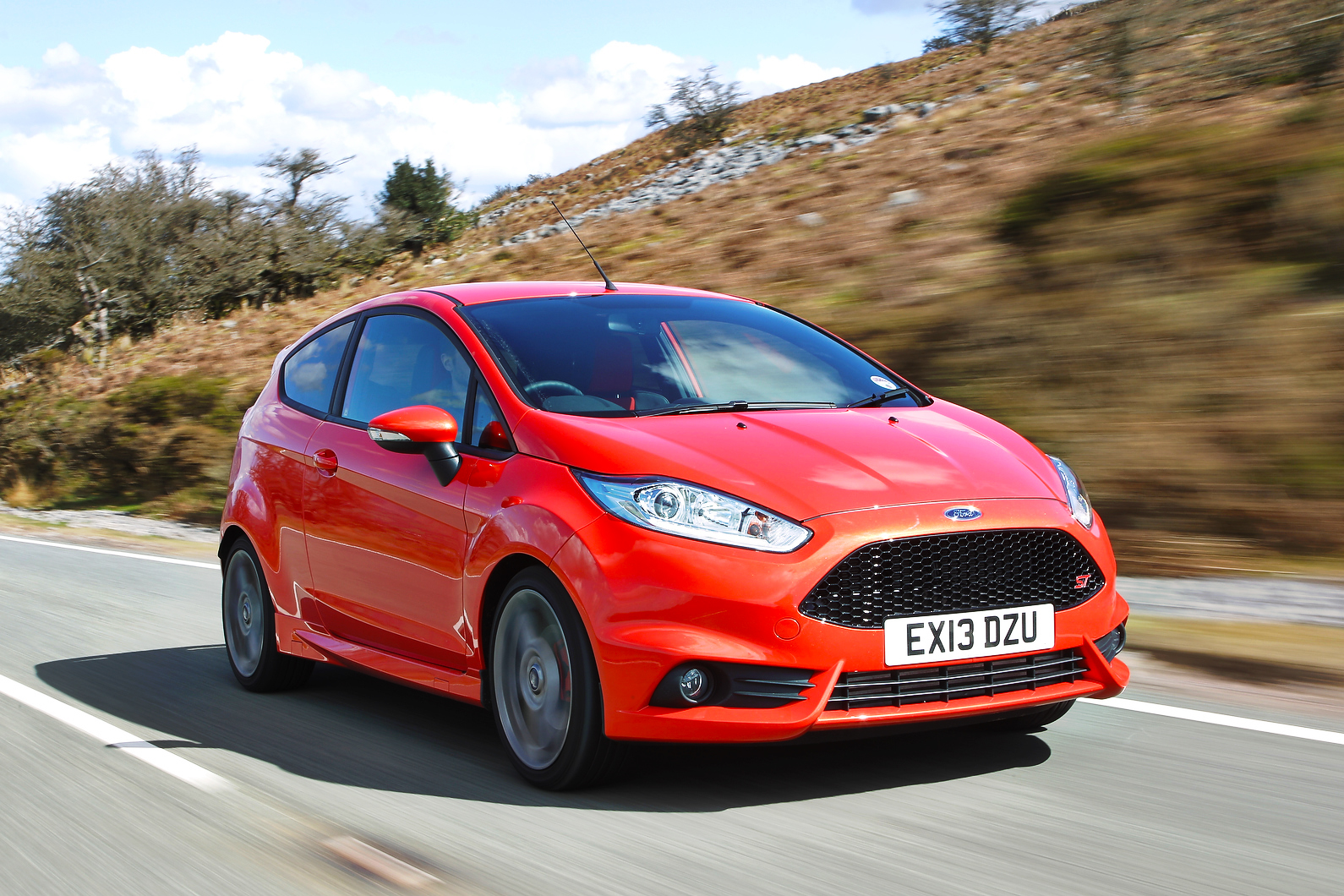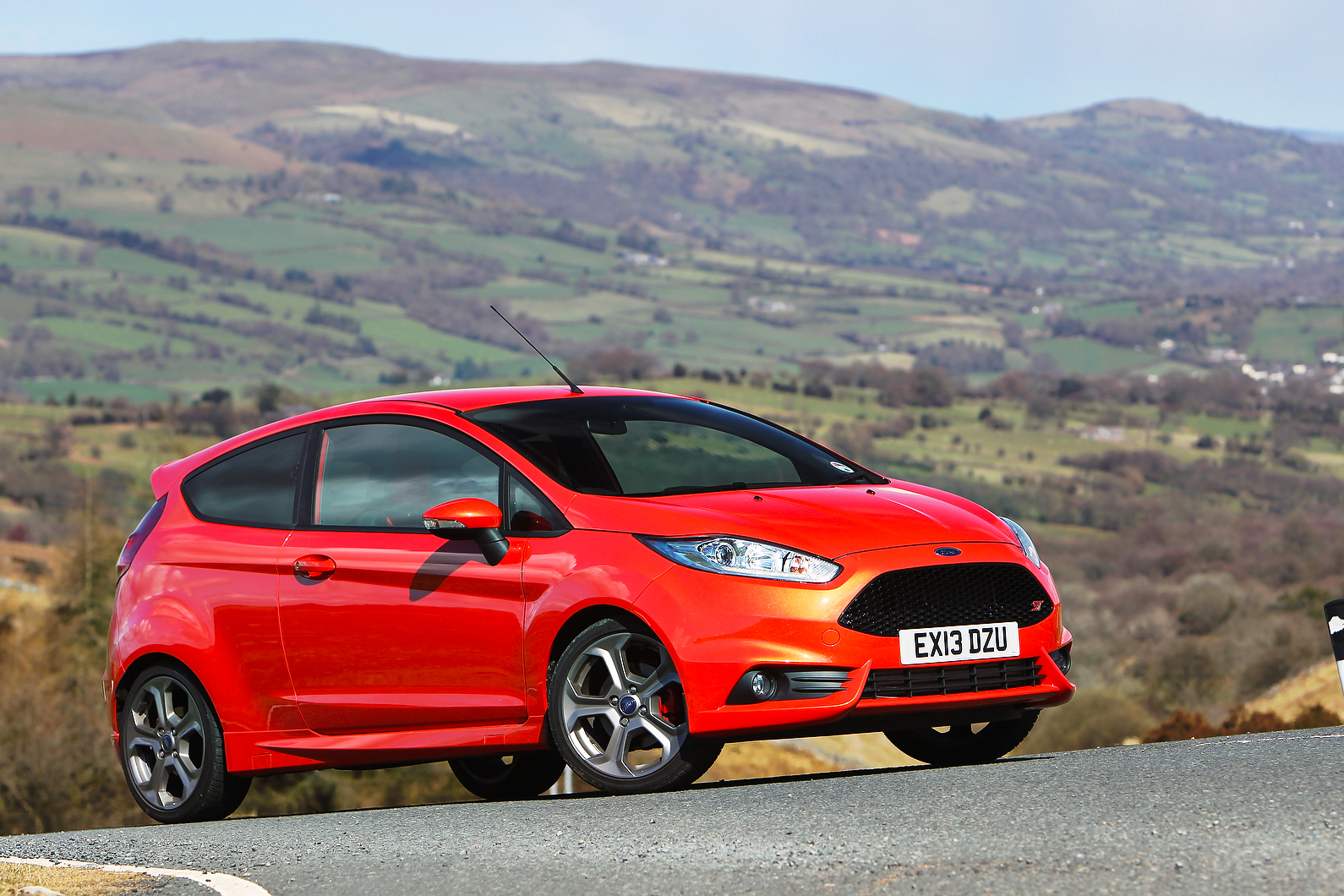Were it not for the bolstered support of the new two-tone Recaro front seats, you could almost be forgiven for mistaking the Ford Fiesta ST’s interior as standard fare.
Even closer inspection reveals only detail alterations. The gearlever and pedals are dressed in alloy, the steering wheel wears a small ST badge and the traction control function – usually hidden in Ford’s sub-menus – is given its own unmissable button on the centre console.
It’s possible that some prospective customers might find the lack of differentiation a little disappointing, but Ford would argue that the ST is a sober performance upgrade rather than a brazen RS-style assault on the senses.
Still, for our money, the result is thoroughly agreeable. Added to which, further confetti would only have inflated the car’s bottom line, and we like the price where it is. This does mean that the Fiesta’s familiar weaknesses are also the ST’s, but we can live with those.
In an ideal world, there would be a larger multimedia screen (at 4.2in, even the upgraded one in the ST-1 is too small) and navigating its cluttered menus wouldn’t be quite such an ordeal, but these are trifling incidentals to gripe about in a hot hatch. Even with the upgraded Sony stereo system, the infotainment system is still clunky to use and rather difficult to do anything simple while on the move. It is worth point out that you need to invest in the ST-3 to get sat-nav included as standard.
Niggles with the driving position seem more consequential. The Ford’s new seats don’t tilt adjust, so lowering them all the way to the floor – desirable, given their high positioning – forces the driver to recline slightly by gently thrusting the thighs upward.
Taken with the Recaros’ lack of lumbar support, there is the potential for some long-range discomfort here. Nevertheless, the quality of the seat’s lateral bracing is excellent, and with all the other essentials – steering wheel, gearlever, pedals – in satisfying orientation, most drivers will be content with the ST’s internal layout.
The ST formula gives owners four trim choices - three apply to the standard 187bhp Fiesta ST and one option for the ST200. The ST-1 trim gives the Fiesta an ST-style 17in alloy wheels, bodykit, rear spoiler, rear diffuser and honeycomb mesh grille, while equipping the ST with DAB radio and fabric upholstered Recaro seats. The mid-range ST-2 adds partial leather and heated front Recaros, keyless ignition and Sony's stereo system, while the ST-3 models get sat-nav, cruise control, climate control, automatic wipers, lights and dimming mirrors and keyless entry.
Those looking for a bit more bit from their little hot hatch, Ford has addressed this in the shape of the 197bhp ST200, which comes with a re-tuned version of the 1.6-litre Ecoboost engine for performance gains, unique grey paint job, Recaro seats and black machined alloys.


